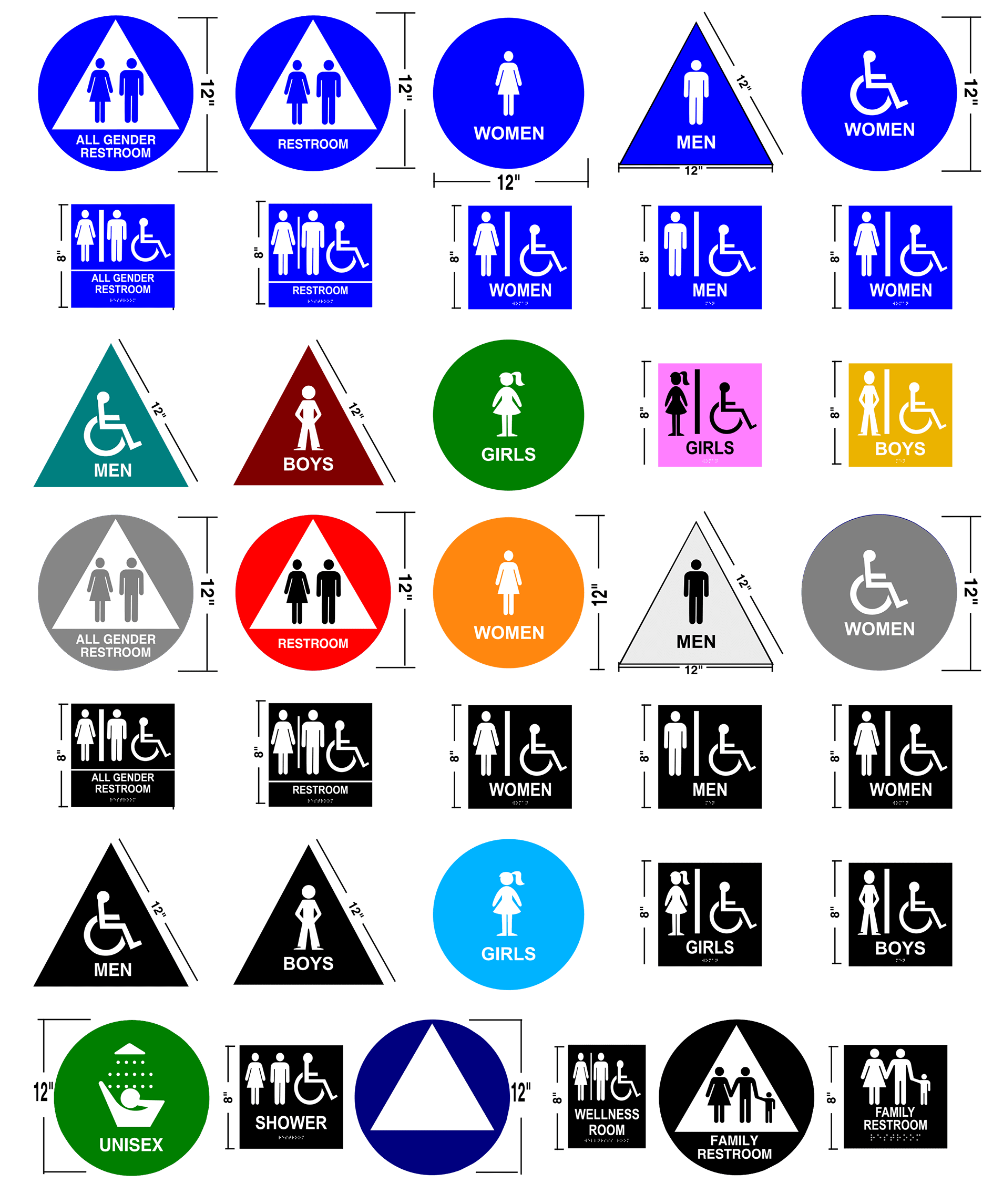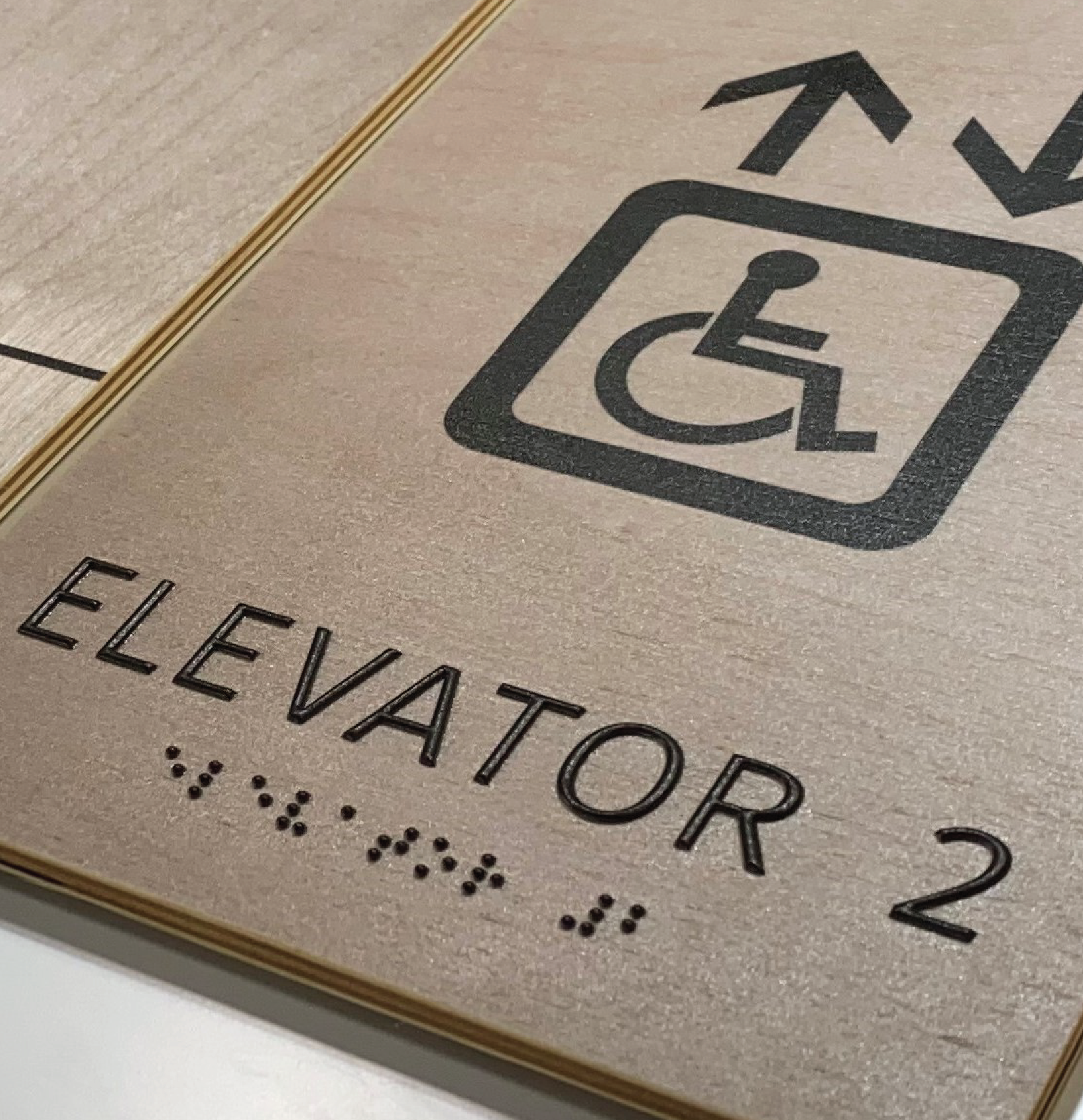A Comprehensive Guide to Choosing the Right ADA Signs
A Comprehensive Guide to Choosing the Right ADA Signs
Blog Article
Discovering the Trick Attributes of ADA Indicators for Improved Availability
In the world of accessibility, ADA indications serve as quiet yet powerful allies, making sure that areas are accessible and inclusive for individuals with handicaps. By integrating Braille and responsive elements, these signs damage obstacles for the visually impaired, while high-contrast shade schemes and clear typefaces provide to varied visual requirements.
Relevance of ADA Compliance
Guaranteeing conformity with the Americans with Disabilities Act (ADA) is crucial for fostering inclusivity and equal gain access to in public spaces and offices. The ADA, enacted in 1990, mandates that all public facilities, employers, and transportation services accommodate individuals with impairments, ensuring they take pleasure in the same rights and chances as others. Conformity with ADA standards not only fulfills legal commitments but likewise boosts a company's reputation by demonstrating its commitment to diversity and inclusivity.
Among the crucial facets of ADA conformity is the execution of accessible signage. ADA signs are developed to make sure that people with specials needs can conveniently browse via structures and rooms. These indicators have to stick to specific standards concerning dimension, typeface, shade comparison, and placement to guarantee visibility and readability for all. Correctly executed ADA signage helps eliminate barriers that individuals with disabilities typically experience, therefore promoting their freedom and self-confidence (ADA Signs).
Furthermore, adhering to ADA policies can alleviate the threat of prospective penalties and legal repercussions. Organizations that fall short to abide by ADA guidelines might face legal actions or charges, which can be both economically burdensome and destructive to their public picture. Thus, ADA conformity is important to promoting an equitable atmosphere for everybody.
Braille and Tactile Elements
The incorporation of Braille and responsive aspects into ADA signs symbolizes the concepts of availability and inclusivity. These functions are crucial for people who are blind or aesthetically impaired, enabling them to browse public areas with better self-reliance and confidence. Braille, a tactile writing system, is essential in giving written details in a format that can be quickly perceived through touch. It is commonly put beneath the matching text on signs to guarantee that people can access the info without visual aid.
Tactile aspects prolong beyond Braille and include elevated icons and personalities. These elements are created to be discernible by touch, allowing individuals to identify area numbers, toilets, leaves, and various other important locations. The ADA sets specific standards pertaining to the dimension, spacing, and placement of these tactile elements to maximize readability and make certain uniformity across different settings.

High-Contrast Color Pattern
High-contrast shade schemes play a pivotal duty in improving the exposure and readability of ADA signs for individuals with visual problems. These systems are vital as they make best use of the difference in light reflectance between text and background, making certain that indications are easily noticeable, also from a distance. The Americans with Disabilities Act (ADA) mandates making use of specific color contrasts to fit those with restricted vision, making it an essential element of conformity.
The efficiency of high-contrast shades depends on their capacity to stand apart in various illumination problems, including poorly lit atmospheres and areas with glow. Normally, dark message on a light background or light message on a dark background is used to achieve ideal comparison. As an example, black over at this website text on a yellow or white background gives a stark visual distinction that aids in fast recognition and comprehension.

Legible Fonts and Text Size
When taking into consideration the style of ADA signs, the selection of clear font styles and ideal text size can not be overstated. These aspects are critical for ensuring that signs come to individuals with visual disabilities. The Americans with Disabilities Act (ADA) mandates that font styles should be not italic and sans-serif, oblique, script, extremely ornamental, or of unusual type. These demands help guarantee that the text is easily understandable from a distance and that the characters are distinguishable to diverse target markets.
The dimension of the message likewise plays a critical role in ease of access. According to ADA guidelines, the minimum message elevation ought to be 5/8 inch, and it ought to enhance proportionally with viewing range. This is specifically crucial in public areas where signage requirements to be checked out promptly and properly. Consistency in text dimension adds to a cohesive aesthetic experience, helping people in browsing atmospheres efficiently.
In addition, spacing between lines and letters is integral to clarity. Sufficient spacing protects against characters from showing up crowded, enhancing readability. By sticking to these criteria, designers can dramatically enhance access, guaranteeing that signs serves its designated objective for all individuals, despite their aesthetic capabilities.
Efficient Positioning Strategies
Strategic placement of ADA signs is necessary for maximizing availability and guaranteeing compliance with legal standards. ADA standards specify that indications ought to be mounted at a height between 48 to 60 inches from the ground to guarantee they are within the line of sight for both standing and seated people.
Furthermore, indicators need to be put adjacent to the lock side of doors to enable simple identification prior to entrance. This placement aids people locate areas and areas without obstruction. In instances where there is no door, indications ought to be situated on the nearby nearby wall. Uniformity in sign positioning investigate this site throughout a facility enhances predictability, lowering complication and improving total individual experience.

Final Thought
ADA indicators play a vital role in advertising ease of access by incorporating functions that deal with the needs of individuals with impairments. Incorporating Braille and responsive elements makes certain vital details is accessible to the visually damaged, while high-contrast color design and legible sans-serif font styles improve presence throughout various lighting conditions. Efficient positioning approaches, such as appropriate mounting heights and calculated places, additionally promote navigating. These components jointly foster an inclusive environment, underscoring the significance of ADA compliance in guaranteeing equal gain access to for all.
In the realm of ease of access, ADA indications serve as silent yet powerful allies, guaranteeing that spaces are navigable and inclusive for people with disabilities. The ADA, passed in 1990, mandates that all public facilities, employers, and transport solutions accommodate individuals with disabilities, ensuring they appreciate the very same civil liberties and chances as others. ADA Signs. ADA indications are developed to ensure that individuals with handicaps can quickly browse via structures and spaces. ADA standards state that indicators need to be installed at an elevation between 48 to 60 inches from the ground to guarantee they are within the line of view for both standing and seated individuals.ADA indications play an important function in advertising access by incorporating features that resolve the needs of people with impairments
Report this page